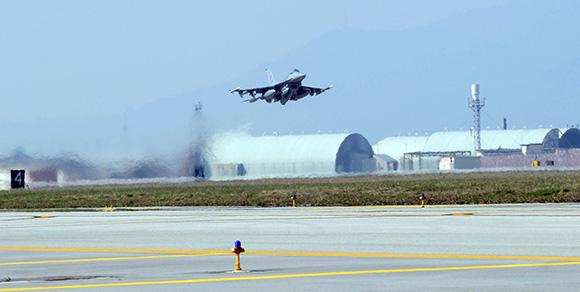Within the next three years the United States will update 500 B61 hydrogen nuclear bombs, including 180 warheads located at six bases in Europe, to the Mod-12 version. With the new modifications, the bombs can be used more "easily" by the commanders in the field. While not technically a new weapon, the Pentagon update transforms the current "stupid" (that is, free-fall) nuclear inventory into "intelligent", into a weapon system, that is, a precision-guided one.
Simplifying the B61-11 as much as possible, deployed at the end of the 90 and cataloged as a "nuclear bunker buster", it requires a 400 kiloton warhead to hit the target, also considering the variables: margin of error, penetration capacity and composition of the ground. An unacceptable power except in an open war context. The B61-12, on the other hand, with an accuracy of 30 meters from the lens requires only one tested by 50 kilotons (a more acceptable power and with fewer side effects). This means more accuracy and a new use on the battlefield. The detonating efficiency of a head from 50 kilotons, within a radius of 30-68 meters, is absolutely necessary to pulverize any type of fortified bunker.
We know that the United States will not displace other nuclear bombs in Europe, but just in the old continent the modifications on the existing nuclear stocks will be carried out quickly. The B-61 deployed in Europe will be the first to be modernized. The B61 technology is also known as "Dial-a-yield". This means that every bomb has an adjustable power: from a maximum equivalent of 50.000 tons of TNT to a minimum of 300. The use on the battlefield, therefore, can be customized depending on the desired effect and the objective. The upgrades, despite the postponements and cuts, should start by the end of the 2018, on pain of deterioration of the more obsolete warheads (ie those located in Europe) for a total of 500 tested Mod-3, 4, 7 and 10 to be reconverted.
It should be noted that precisely in Europe, the B-61-12 can be transported exclusively by the F-35. F-16 and Tornado, in fact, due to some incompatibilities between the systems, could not launch the new Mod-12. The update of the 500 nuclear warheads should also be seen under a tactical profile. Starting with the 2020, NATO could have a low-observability fifth-generation fighter (the F-35) equipped with intelligent nuclear weaponry with scalable power. More than the F-35 (at least now), the real game-changer that could stabilize the European asset is the B61-12 bomb. The cost of updating the first stock from 500 bombs B61, considered a real program of life extension of the system, it will cost American tax payers from 8 to 12 billions of dollars. They will remain in service until 2040.
Why the B61-12?
Because it is considered a credible tactical nuclear weapon, powerful enough to protect NATO allies. The B-61 represent a nuclear deterrent considered able to dissuade even the allies themselves from developing "homemade" nuclear weapons.
Where are the nuclear bombs in Europe?
The Italian bases of Ghedi and Aviano should together host from 30 to 50 B61 nuclear bombs. The six NATO bases (Belgium (Kleine Brogel AB), Germany (Buchel AB), Italy (Aviano and Ghedi AB), Netherlands (Volkel AB), and Turkey (Incirlik AB) host around 180 American B61 Mod-3 nuclear bombs , -4, -7, -10: All B61s located in Europe will be replaced with the latest version of the nuclear hydrogen bomb to be implemented in the F35A.
(in the photo an F-16 taking off from the Aviano base - source: US Air Force)












